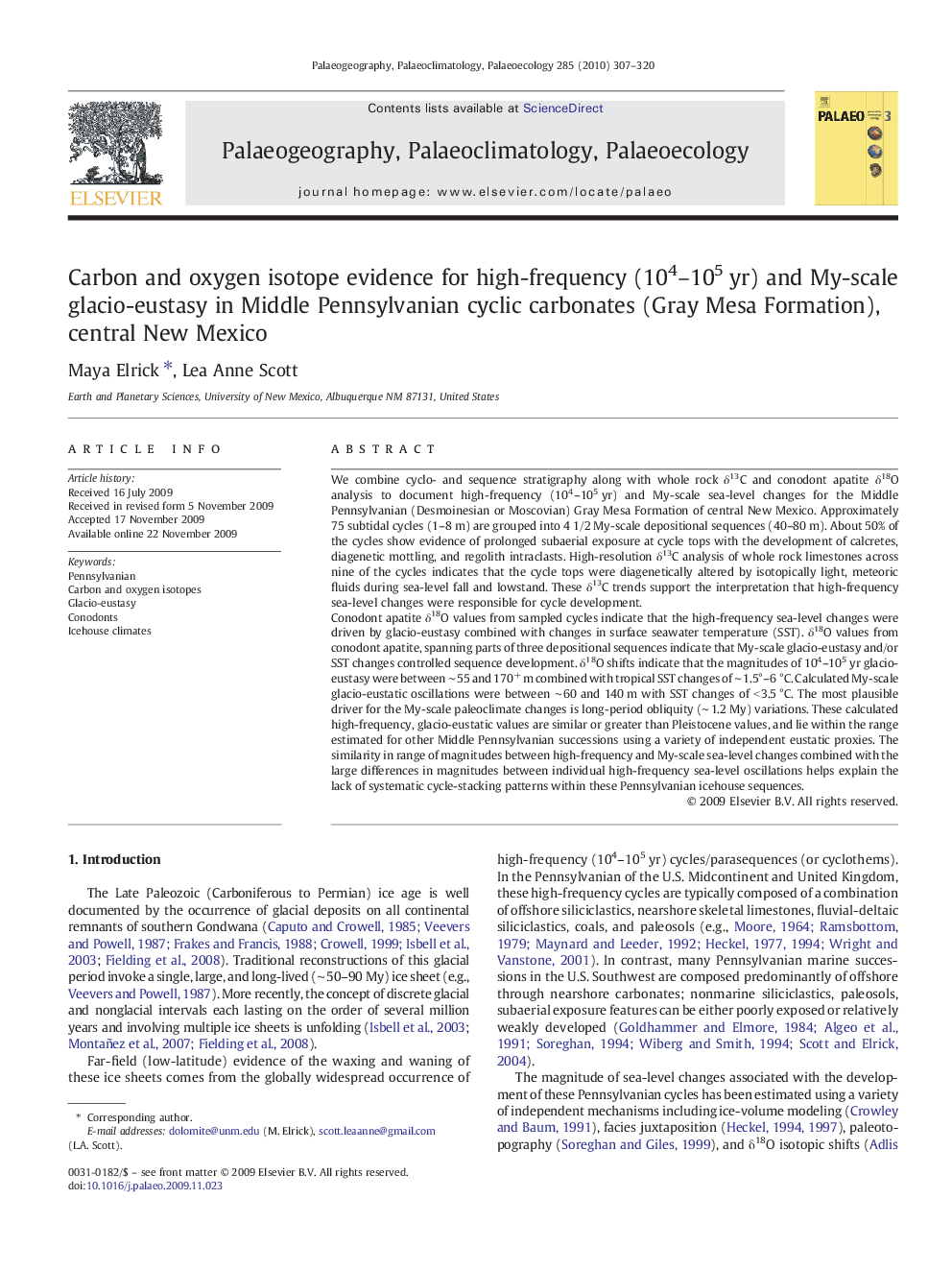| کد مقاله | کد نشریه | سال انتشار | مقاله انگلیسی | نسخه تمام متن |
|---|---|---|---|---|
| 4467858 | 1622287 | 2010 | 14 صفحه PDF | دانلود رایگان |

We combine cyclo- and sequence stratigraphy along with whole rock δ13C and conodont apatite δ18O analysis to document high-frequency (104–105 yr) and My-scale sea-level changes for the Middle Pennsylvanian (Desmoinesian or Moscovian) Gray Mesa Formation of central New Mexico. Approximately 75 subtidal cycles (1–8 m) are grouped into 4 1/2 My-scale depositional sequences (40–80 m). About 50% of the cycles show evidence of prolonged subaerial exposure at cycle tops with the development of calcretes, diagenetic mottling, and regolith intraclasts. High-resolution δ13C analysis of whole rock limestones across nine of the cycles indicates that the cycle tops were diagenetically altered by isotopically light, meteoric fluids during sea-level fall and lowstand. These δ13C trends support the interpretation that high-frequency sea-level changes were responsible for cycle development.Conodont apatite δ18O values from sampled cycles indicate that the high-frequency sea-level changes were driven by glacio-eustasy combined with changes in surface seawater temperature (SST). δ18O values from conodont apatite, spanning parts of three depositional sequences indicate that My-scale glacio-eustasy and/or SST changes controlled sequence development. δ18O shifts indicate that the magnitudes of 104–105 yr glacio-eustasy were between ∼ 55 and 170+ m combined with tropical SST changes of ∼ 1.5°–6 °C. Calculated My-scale glacio-eustatic oscillations were between ∼ 60 and 140 m with SST changes of < 3.5 °C. The most plausible driver for the My-scale paleoclimate changes is long-period obliquity (∼ 1.2 My) variations. These calculated high-frequency, glacio-eustatic values are similar or greater than Pleistocene values, and lie within the range estimated for other Middle Pennsylvanian successions using a variety of independent eustatic proxies. The similarity in range of magnitudes between high-frequency and My-scale sea-level changes combined with the large differences in magnitudes between individual high-frequency sea-level oscillations helps explain the lack of systematic cycle-stacking patterns within these Pennsylvanian icehouse sequences.
Journal: Palaeogeography, Palaeoclimatology, Palaeoecology - Volume 285, Issues 3–4, 15 January 2010, Pages 307–320